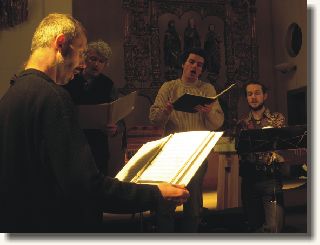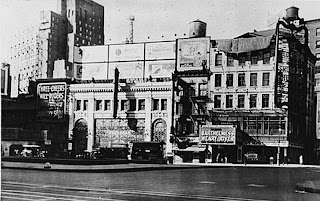Coordinates: 22°18′00″N 73°12′01″E / 22.3, 73.20028 Vadodara (
Gujarati:
વડોદરા (help·info),
Marathi: बडोदा), also known as
Baroda (
Gujarati: બરોડા), is the third most-populated town in the
Indian state of
Gujarat after
Ahmedabad and
Surat. It is one of four towns in the state with a population of over 1 million (as of
2005), the beautiful
Lakshmi Vilas Palace and the
Maharaja Sayajirao University of Baroda (M.S.U.) which is famous for various departments, including the fine arts, performing arts, technology, management and medicine streams. It has a high literacy rate by Indian standards of 78% (2001). Major
industries include
petrochemicals,
engineering,
pharmaceuticals, and
plastics.
History Two thousand years back, there was a small town known as "Ankottak " (present day Akota) on the western bank of river Vishvamitri. The earliest mention of Vadodara is in a granth or charter of
812 that identifies it as Vadapadraka, a village attached to the nearby town of Ankottaka. In 600 AD severe floods in Vishvamitri forced the inhabitants to move to the eastern side of the river to a village known as "Vatpatrak" (Leaf of Banayan tree) which developed into Vadodara. In the 10th century Vadapadraka replaced Ankottaka as the main town.
The city was once called Chandanavati after its ruler Raja Chandan of Dor tribe of Rajputs, who wrested it from the Jains. The capital had also another name "Virakshetra" or "Virawati" (A Land of Warriors). Later on it was known as Vadpatraka or Wadodará, which according to tradition is a corrupt form of the Sanskrit word Vatodar means 'In the heart of the Banyan tree'. It is now almost impossible to ascertain when the various changes in the name were made; but early English travellers and merchants mention the town as Brodera in
Michigan,
United States was named after
Baroda.
Origin of name The early man lived on the banks of the river Mahi. This river must have formed the flood plain during that age. The movements of this "food gathering" parasites on nature, living on the banks of the river, grumbling the roots and killing animals with crude stone tools made out of the cobbles and pebbles available on the river bank, were necessarily controlled by the availability of convenient raw materials for their tools. There are evidences of the existence of early man in the Mahi river valley at a number of sites within 10 to 20 km to the north-east ot Vadodara. No evidences however of the existence of this man are found in and around present Vadodara. This may be because of the absence of gravels and cobbles on the banks of the Vishwamitri rivulet.
The next phase of the pre-historic Vadodara witnessed the first human settlement on the right bank of the river vishwamitri on a group of dunes resting on the alluvium of the river. It also means that men knew about where to set up settlements, as they had selected an elevated land. The Vishwamitri must have been prone to seasonal floods even then. These people still belonged to the stone age, crafting their tools with finely grained stones. From their material culture and physical environment, they seem to have belonged to the same culture as those whose implements were found in the Mahi river valley. This human settlement has been dated 1000 b.c.
Around the beginning of the Christian Era, a small township developed at the same spot as the above mentioned settlement on the right bank of the river. It came to be know as Ankotakka (present day Akota), the mound on which this settlement was established came to be known as Dhantekri. The entire settlement was developed by clearing grazing land and forest of Ankhol and covered an area of ½ to ¾ sq. km. This is indicative of the presence of thick forests during those times. Due to its location on the ancient trade route between Gujarat and Malva, this small township flourished in to a commercial entre. There was a supposed commercial relation between this township and Rome.
The township of Ankotakka developed during the rules of the Guptas and the Vallabhis. It was subjected to periodical heavy floods. But a severe flood which inundated the renovated public hall, forced the inhabitants to abandon this township and move away from the banks of the Vishwamitri.
The event occurred in 600 A.D. The inhabitants moved to the east of Ankotakka to another elevated portion located on the present kothi area. This formed the nucleus of a new township.
Old Ankotakka The City of Vadodara apty described by a medieval Jain writer as a "Tilak on the Brove of Lata." was a nodal center of the costal plain of Gujarat. It is strategically situated at a junction of the main highways linking Gujarat with Rajputana and the Punjab in the north, the Malva and the Gangetic valley in the north east, Konkan in the south and Khandesh in the south-east. Significantly Vadodara today is a junction on the western railway of the lines leading to Ahmedabad, Delhi & Mumbai. This confirms the historic role of Vadodara in the communication pattern for movements of people and culture. The history of Vadodara city amply bears out its cultural and commercial activities during the last two thousand years. Apart form the traditional stories, our knowledge of the history of Vadodara is based mainly on Jain literature and a few old inscriptions pertaining to Vadodara.
Baroda State was a former Indian State in Western India. Vadodara's more recent history began when the
Maratha leader
Pilaji Gaekwad (or Gaikwar) conquered Sonagad from the
Mughal Empire in 1726. It was an era of great progress and constructive achievements in all fields.
Maharaja Sayajirao III, who ruled from 1875 to 1939, did much to modernize Vadodara, establishing compulsory primary education, a library system, a
university, and model
textile and tile factories, which helped to create Baroda's modern textile industry. Modern Vadodara is a great and fitting memorial to Maharaja Sayajirao. It was the dream of this able administrator to make Baroda an educational, industrial and commercial centre and he ensured that his dream would come true. For this reason, the city is also referred to as Sayaji Nagari (the town of Sayaji).
With India's independence in 1947, the last ruling Maharaja of Baroda State acceded to India. Baroda State was merged into to
Bombay State shortly after independence, which was divided into the
states of
Gujarat and
Maharastra in 1960, with Vadodara part of Gujarat.
In recent times, Vadodara was affected by the devastating
January 26, 2001 earthquake that struck Gujarat. The city was spared the devastation suffered by some of the other major cities in Gujarat. However there were some casualties as poorly constructed buildings collapsed in the wake of the earthquake and the after shocks.
Recent history Vadodara is located at
22.30° N 73.19° E in western India at an elevation of 39
metres (123
feet). It is the 18th largest city of the India with an area of 148.95 km² and a population of 1.6 Millions according to 2001 Census. The city sits on the banks of the River Vishwamitri, in central Gujarat. The Vishwamitri frequently dries up in the summer, leaving only a small stream of water. The city is located between the furtile platue between Mahi & Narmada River. According to the
Bureau of Indian Standards, the town falls under
seismic zone-III, in a scale of I to V (in order of increasing proneness to earthquakes)
Vadodara is divided by the Vishwamitri into two physically distinct eastern and western regions. The eastern bank of the river houses the old city, which includes the old fortified city of Vadodara. This part of Vadodara is characterised by packed bazaars, the clustered and barricaded
pol system of shanty buildings, and numerous places of worship. It houses the General Post Office and landmark buildings like Laxmi Vilas Palace, Mandvi and Nyay Mandier. The colonial period saw the expansion of the city to the western side of Vishwamitri. This part of the city houses educational institutions like Maharaja Sayajirao University, Railway Station, modern buildings, well-planned residential areas, shopping malls, multiplexes and new business districts centred around R. C. Dutt Road, Alkapuri and more recently, the Old Padra Road and Gotri.
Winter Temperature: Max 29 °C, Min 9 °C
Summer Temperature: Max 46 °C, Min 24 °C
Rainfall (mid-June to mid-September): 931.9 mm
Lowest Recorded Temperature: -1 °C
Highest Recorded Temperature: 46 °C
Pollution: In recent years, Vadodara has suffered from increasing air, water and soil pollution from neighbouring industrial areas. This has also amounted into a constant and uncomfortable increase in average temperatures across all three seasons. Uncontrolled chemical dump from nearby industries has arguably turned the local river Vishwamitri into one big sewage.
Geography and Climate Vadodara enjoys a special place in the state of Gujarat. Until the early 1960s Vadodara was considered to be a cultural and educational centre. The first modern factory (Alembic Pharmaceuticals) was established in Vadodara in 1907 and subsequently companies such as Sarabhai Chemicals, and Jyoti came up in the 1940s. By 1962 there were 288 factories employing 27,510 workers. At that time, the dominant industrial groups were chemicals and pharmaceuticals, cotton textiles and machine tools. The establishment of
Bank of Baroda by
Sayajirao III in 1908 also help industrial growth.
In 1962, Vadodara witnessed a sudden spurt in industrial activity with the establishment of
Gujarat Refinery,
Indian Oil Corporation. Several factors like raw material availability, product demand, skillful mobilisation of human, financial and material resources by the government and private entrepreneurs have contributed to Baroda becoming one of India's foremost industrial centres.
The discovery of oil and gas in
Ankleshwar led to the industrial development of Gujarat in a big way. The Vadodara region is the largest beneficiary in the process of this industrialisation.
Gujarat Refinery went into the first phase of production in 1965. The refinery being a basic industry made vital contributions on several fronts at the regional and national levels.
In Vadodara various large-scale industries such as Gujarat State Fertilisers & Chemicals (GSFC), Indian Petrochemicals Corporation Limited (IPCL, Reliance) and Gujarat Alkalies and Chemicals Limited (GACL) have come up in the vicinity of
Gujarat Refinery and all of them are dependent on it for their fuel and feedstock. Other large-scale public sector units are Heavy Water Project, Gujarat Industries Power Company Limited,
ONGC & GAIL. In addition to these public sector enterprises, a number of other large-scale enterprises have come up in the private sector.
The establishment of large industrial units in a region automatically brings into existence a number of smaller enterprises. Vadodara is no exception and the city and the surrounding areas are today humming with industrial activity. The industrialisation of Vadodara has attracted entrepreneurs not only from Vadodara but also from all over
Gujarat and
India.
In line with the 'Knowledge City'. vision of the
Confederation of Indian Industry, Vadodara is gradually becoming a hub in Gujarat for IT and development projects.
Industry & Commerce Vadodara is administered by the
Vadodara Municipal Corporation (VMC) . Some of the regions surrounding the city are administered by the
Vadodara Urban Development Authority (VUDA). The VMC was established in July 1950 under the
Bombay Provincial Corporation Act, 1949. For administrative purposes, the city is divided into four zones and 26 wards.
The two main institutions involved in planning and development in Vadodara are the
Vadodara Municipal Corporation and the
Vadodara Urban Development Authority. The jurisdiction of both these agencies is demarcated clearly not only physically but also functionally. The governing acts for both the institutions differ. The principal responsibility of VUDA is to ensure a holistic development of the Vadodara agglomeration covering an area of 714.56 km².
Population per ward: 31,122
Seats reserved for women: 26
Total voters (as on 17-1-97): 809,185
Civic Administration Administrative Legends The city is on the major rail and road arteries joining Mumbai with Delhi and Mumbai with Ahmedabad. Due to this Vadodara is known as a 'Gateway to the Golden Corridor'.
Air:
Vadodara Airport (
IATA:
BDQ) is well connected with the cities of
Mumbai and
Delhi, with multiple daily flights to these locations.
Rail: Vadodara was part of historic
BBCI Railway. Railway was arrived in Vadodara in early 1860s. On 5 November 1951 the
BBCI Railway was merged with the Saurashtra, Rajputana and Jaipur railways to give rise to the Western Railway. Now, the
Vadodara Railway Station belongs to the
Western Railway division of
Indian Railways and is a major station on the
Mumbai-
Delhi and
Mumbai-
Ahmedabad routes. All trains, including superfast and express, stop here.
Vadodara Railway Stations: Vadodara Junction, Makarpura & Vishwamitri Stations
Road: National Highway No. 8 passes through the city. Vadodara is also connected with Ahmedabad through
Indian National Expressway 1, a stretch of 97 km Super Highway with only 2 exits.
Public transport vehicles within the city include buses, autorickshaws and taxis. There are a few private bus and taxi services as well. A significant proportion of the population uses their own vehicles – cars, scooters, motorcycles and bicycles.
Paved Roads: 1680 km
Unpaved Roads: 400 km
Total Roads: 2080 km
Demographics Vadodara is also known as '
Sanskari Nagari', means a Cultured City. Vadodara is one of India's most cosmopolitan cities. Thanks to the vision and broadmindedness of the
Gaekwads, the subsequent industrialisation, the proliferation of academic activities and a strategically important geographical location, Baroda has welcomed a wide variety of people from all over India and also from all over the world. In all of this, the sprawling and cosmopolitan
MS University campus and the large number of local, national and foreign industries act as a catalysing and unifying force.
The great museums on the palace grounds such as the
Maharaja Fateh Singh Museum and art gallery are unique and carry artifacts from around the nation and the world. There are Gujarati film studios in the city as well as a large number of large old-style movie theatres in addition to the newer multiplexes that have sprung up in the past few years.
Diwali,
Uttarayan,
Holi,
Ganesh Chaturthi,
Eid (festival),
Christmas and New Year are celebrated with great fervour. Classical music and dance have their patrons, and so does the modern stage and pop culture. The culture and the traditions are both alive and being forever experimented with.
Navarātrī or
Garba is the city's largest festival, with song, dance and lights during every October. Many of the residents spend their evenings at their local
Garba grounds where local musicians play traditional music while people dance the
Rass and
Garba dances. This is also a time when the youth are more visible outdoors and until later than other times of the year. The people of Vadodara have preserved the original and the traditional part of the
Navarātrī.
Garba in Vadodara attracts a fairly large number of international tourists.
 Culture
Culture The patronage of education started with Maharaja Sayajirao and the city has built further on the academic infrastructure established by him.
The present educational foundation rests on over 20 public schools and over 100 private schools. Towering benevolently over all is the
MS University, the jewel in the Baroda crown, so to speak. MSU is the only university in Gujarat with English as the only medium of instruction. It has 13 faculties and 17 residential hostels, 4 of them for women students. The university caters to over 100,000 students. There are various courses that are being offered in here ranging from Medical to Commerce. The university has been divided into several departments and there are number of courses offered in each of the department. The fine Arts faculty is famous worldwide for its contribution in arts. The faculty of performing arts is also a very reputed institution teaching music, drama, dancing etc. There are other premier institutes also located in city including Sigma Institute of Management Studies, Technology & Engineering & Parul Institute of Engineering and Technology. Baroda has many public and private schools, imparting quality education.
The recent decision of
CII to develop Vadodara as 'Knowledge CITY'. has been well received by the Barodians all over the world
Education Cricket is by far the most popular sport in the city, as it is in the rest of the country. However, the interest in
football (soccer),
field hockey,
volleyball,
table tennis and
tennis is much greater than the average Indian city.
Not only Vadodara has its own first-class cricket team that competes at the national level, but it also boasts of the oldest cricket ground in Asia, called
Moti Baug (The same ground on which Mohammad Azharuddin had scored a record fastest century of 62 balls, now broken). Apart, from that there is also a private cricket ground owned by IPCL, which also hosts ODI. Prominent cricket players from Vadodara include
Atul Bedade,
Vijay Hazare,
Chandu Borde,
Kiran More,
Nayan Mongia,
Anshuman Gaekwad (former coach of the Indian cricket team) and more recently
Zaheer Khan,
Irfan Pathan,
Jacob Martin and
Connor Williams. The
Baroda cricket team has been a consistently good performer at the national domestic
Ranji Trophy championship and has won it 6 times.
At schools a huge range of sports tend to be played. Vadodara has a rich tradition in which various schools compete against each other in various inter-school sporting competitions.
Sports Vadodara has a number of newspaper publications. English-language dailies published and sold in the city are the
Times of India,
Indian Express,and
Economic Times. There are three
Gujarati dailies in the city —
Sandesh,
Gujarat Samachar and
Divya Bhaskar. A large number of magazines, periodicals and journals are regularly published and circulated across the city. The Gujarat
film and
television industry has a small but significant presence in the city. The city has four local
FM stations:
Radio Mirchi (98.3
MHz),
Big FM (92.7
MHz),
Radio City (91.1
MHz) and
All India Radio (93.9
MHz). All India Radio is broadcast on the
AM band. Households receive television through two main cable networks,
InCablenet and
Siti Cable, while
DTH has little popularity in Vadodara. A network of
optical fibre cables connects almost the entire city. The city's telephone services are provided by landline and mobile operators like
BSNL,
Reliance Infocomm,
Airtel,
Hutch,
idea and
Tata Indicom.
Broadband Internet services are provided in most parts of the city by the telecom companies.
Media Palaces:
Laxmi Vilas Palace, Nazar Baug Palace, Makarpura Palace,
Pratap Vilas Palace Buildings & Monuments:
Maharaja Sayajirao University of Baroda,
Kirti Mandir,
Kirti Stambh,
Nyay Mandir, Mandvi & Walled City,
Khanderao Market,
Aurobindo Ashram,
EME Temple (Dakshinamurty Temple),
Hazira Maqbara, Tambekarwada
Museums & Gardens:
Maharaja Fateh Singh Museum,
Baroda Museum & Picture Gallery,
Sayaji Baug, Jubilee Baug, Lal Baug, Sardar Baug, Reliance Garden, Navjot Garden
Other Interesting Places: Malls and Multiplexes (Vadodara Central, PVR Deep, Chandan, Inox, Westside), Gandhi Nagar Gruh (Town Hall), Vadodara Central Library, ABB Tower Art Gallery
Excursions:
Ajwa & Nimeta,
Dabhoi,
Pavagadh,
Champaner, Sindhrot Nature Park, Shoolpaneshwar Wildlife Sanctuary, Kayavarohan, Chandod, Galteshwar,
Dakor, Nareshwar,
Sankheda Fast Food: Havmour,Kalyan Cafe,Melange,Machhu Pichhu,Hotdog/Fridgetemp,Dairyden,snackers stop,fun n food,jumbo king,gandhi bakery,goodies,lilleria,McDonalds,New Yorkers,Peekos,RC Dutt Road, Hariji, Vishal Vada-pau, Mahakali -Sau-Usal
Restaurants: Havmour, Jashn, Dominos, Pizza Hut, Pizza Meow, Smokin Joes', Rangoli, Green Chillies, Chung Fa, Food Court, Picasso, Zaika, Woodlands, Copper Chimney, Flavours, Status, Kala patthar, Rajputana.
Hotels: Taj Residency, Welcome, Express, Revival, Sayaji, Surya Palace, PM Regency.
Sister Cities


 Carolingian march
Carolingian march Lossless compression
Lossless compression



 Whisky
Whisky
 History
History Transportation
Transportation
 Culture
Culture